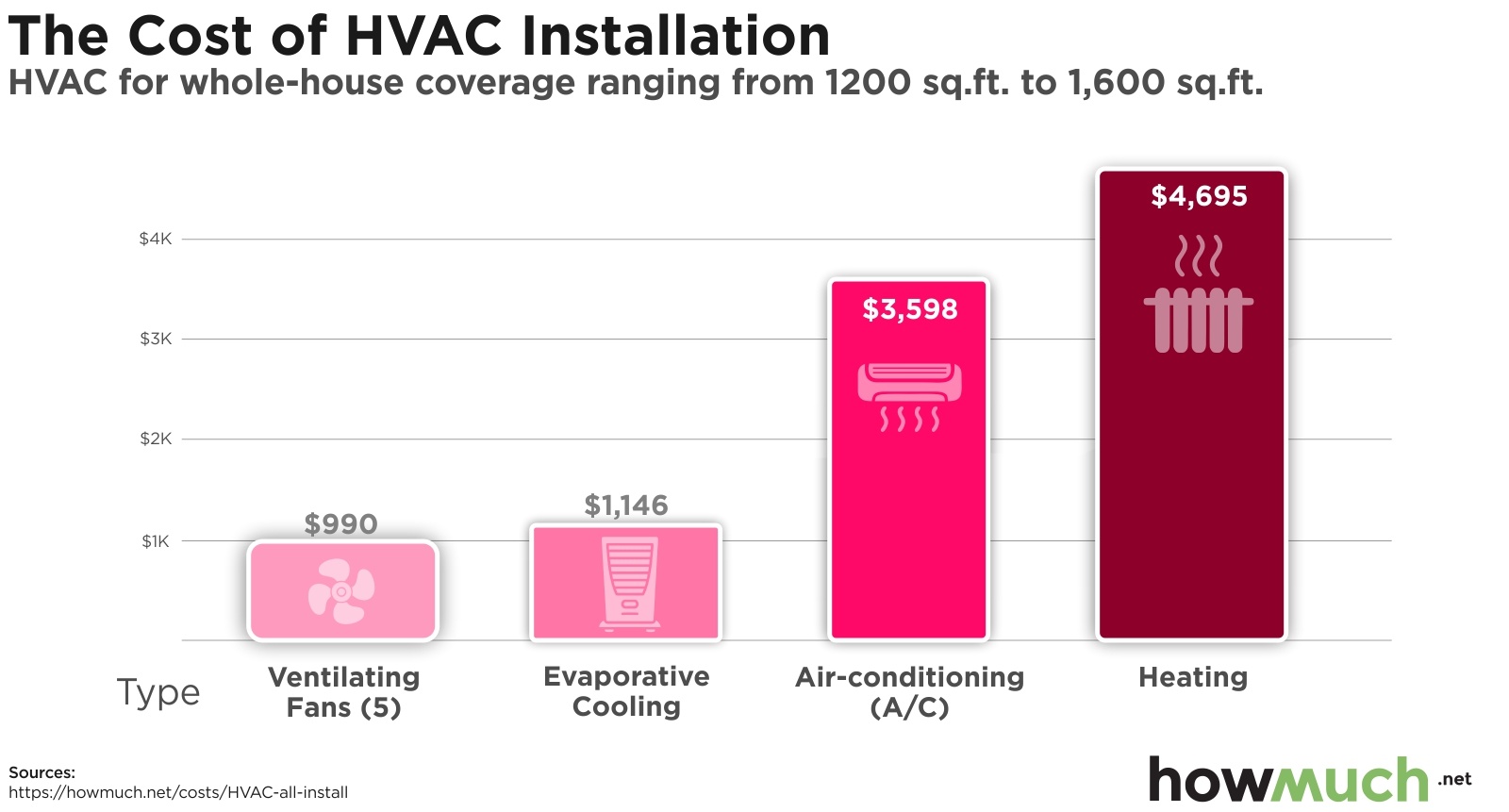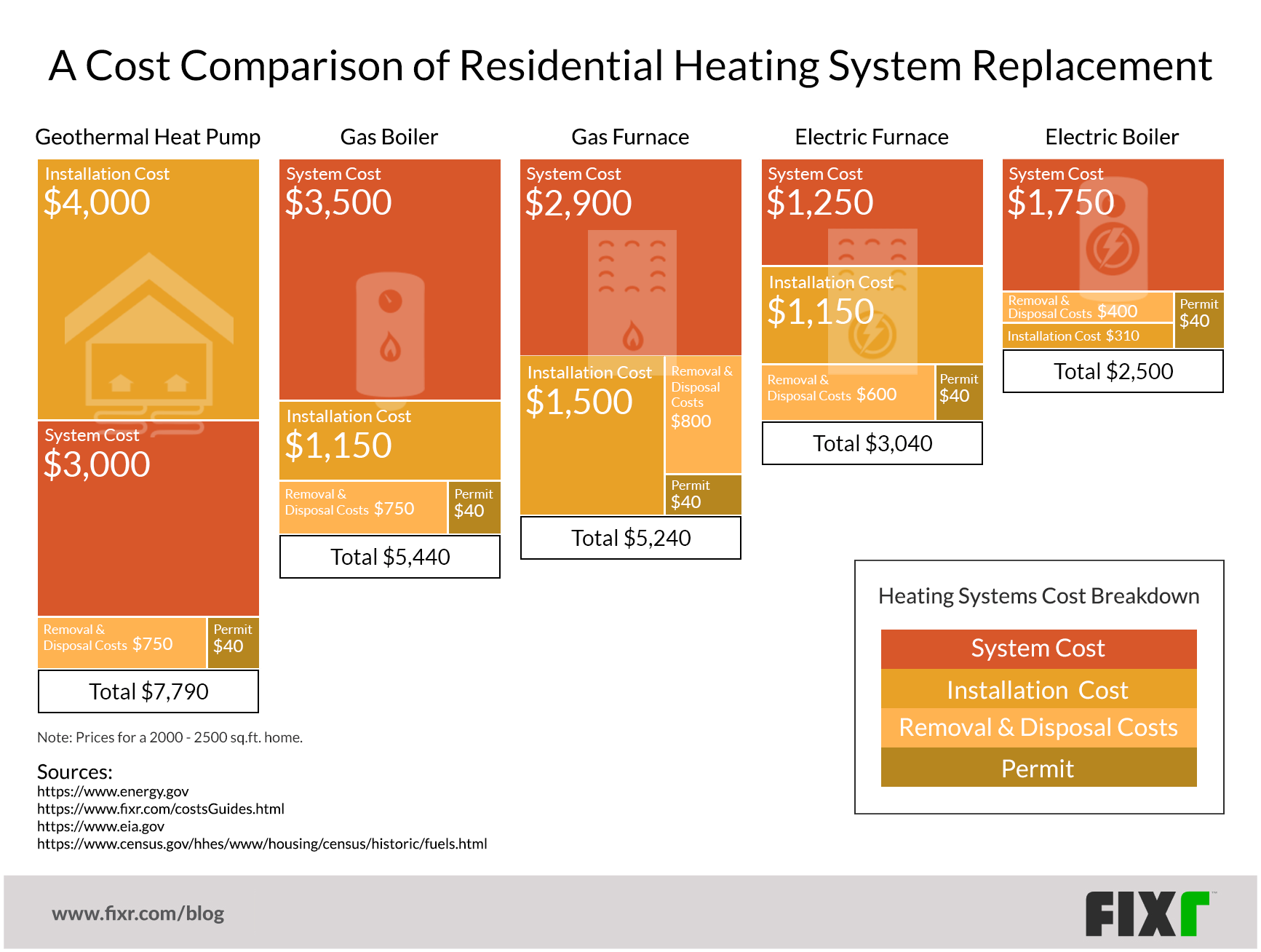How Much Would A New Heating System Cost

It's a chilling scenario: you wake up on a frosty morning, expecting the comforting warmth of your heating system, only to be met with an icy blast. Or worse, no air blowing at all. Before you panic and immediately start thinking about a costly replacement, let's explore what might be happening and what you can do about it. Understanding the potential issues and performing some basic troubleshooting can save you a significant amount of money and stress. We'll walk you through a methodical approach to diagnose the problem and determine if it's something you can fix yourself, or if it's time to call in the professionals. Importantly, we'll also discuss when replacement becomes the *most* cost-effective solution, and how to estimate the costs involved.
Step 1: Initial Checks - The Obvious, But Crucial
Before diving into complex diagnostics, let's start with the fundamentals. These are often overlooked, but can be the culprit in many heating system failures.
1. Verify the Thermostat Settings
This might sound ridiculously simple, but it's the most common oversight. Ensure your thermostat is:
- Set to "Heat": Double-check that the system is not accidentally set to "Cool" or "Off."
- Set to the Correct Temperature: Make sure the desired temperature is higher than the current room temperature.
- Batteries: If your thermostat is battery-powered, replace the batteries. Low batteries can cause erratic behavior or complete failure.
Digital thermostats can sometimes have programming errors. Try setting it to a simple manual setting (hold) to bypass any programmed schedules that might be interfering.
2. Check the Power Supply
Ensure your heating system is receiving power. This involves a few checks:
- Circuit Breaker: Locate the circuit breaker for your heating system in your electrical panel. Make sure it hasn't tripped. If it has, reset it. If it trips again immediately, do not keep resetting it. This indicates a serious electrical problem requiring professional attention.
- Emergency Shut-Off Switch: Many heating systems have an emergency shut-off switch, often located near the furnace or on a nearby wall. Ensure this switch is in the "On" position.
- Gas Supply (If Applicable): If you have a gas furnace, check that the gas supply valve is open. This is typically a valve on the gas line leading to the furnace. Be cautious when handling gas lines; if you smell gas, evacuate the area immediately and call your gas company.
3. Inspect the Air Filter
A clogged air filter is a very common cause of heating problems. A dirty filter restricts airflow, causing the system to overheat and potentially shut down.
- Locate the Filter: Typically found near the furnace or in the return air vent.
- Inspect the Filter: If it's visibly dirty, replace it with a new filter of the correct size and type.
- Regular Maintenance: Change your air filter every 1-3 months, depending on usage and the type of filter.
Step 2: Deeper Diagnosis - Identifying Potential Problems
If the initial checks didn't solve the problem, it's time to dig a little deeper. We'll examine some common issues that might be preventing your heating system from working correctly.
1. Pilot Light or Ignition Issues (For Gas Furnaces)
If your furnace has a pilot light, check if it's lit. If it's not, follow the manufacturer's instructions to relight it. Many newer furnaces have electronic ignition systems. If your furnace isn't igniting, listen for clicking sounds. If you hear clicking but the furnace doesn't ignite, it could be a problem with the igniter or gas valve.
Important Safety Note: If you smell gas at any point, immediately turn off the gas supply and call a qualified technician. Do not attempt to relight the pilot light or ignite the furnace yourself.
2. Blower Motor Problems
The blower motor circulates heated air throughout your home. If the motor is faulty, you may hear strange noises (squealing, grinding), or no air will blow at all. Sometimes, the blower motor capacitor can fail, preventing the motor from starting. This is often a relatively inexpensive repair.
How to Check (Advanced):This step requires caution and should only be attempted if you are comfortable working with electricity. Disconnect power to the furnace before attempting any electrical work.Use a multimeter to test the capacitor. A failed capacitor will typically show a reading of zero or very low microfarads.
3. Ductwork Issues
Leaky or disconnected ductwork can significantly reduce the efficiency of your heating system. Inspect visible ductwork for any obvious damage or disconnections. Seal any leaks with duct tape or mastic sealant.
4. Flame Sensor (For Gas Furnaces)
The flame sensor is a safety device that detects whether the burner is lit. If the flame sensor is dirty or faulty, it can shut down the furnace even if the burner is lit. A common symptom is the furnace firing up briefly and then shutting down.
How to Clean: Turn off the power to the furnace. Locate the flame sensor (it's usually a small metal rod near the burner). Carefully remove it and clean it with fine-grit sandpaper or steel wool. Reinstall the sensor and try restarting the furnace.
Step 3: When to Call a Professional - Knowing Your Limits
While some heating system issues can be resolved with DIY troubleshooting, certain problems require the expertise of a qualified HVAC technician. Do not attempt repairs that you are not comfortable with or that involve working with gas lines, electrical components, or refrigerant.
Here are some situations where professional intervention is necessary:
- Gas Leaks: If you smell gas, evacuate the area and call your gas company and a qualified HVAC technician immediately.
- Electrical Problems: If you suspect an electrical issue, such as a tripped circuit breaker that keeps tripping, or exposed wiring, call an electrician or HVAC technician.
- Refrigerant Leaks (For Heat Pumps): If your heat pump isn't heating properly and you suspect a refrigerant leak, call a qualified technician. Handling refrigerant requires specialized equipment and training.
- Major Component Failure: If you suspect a problem with the heat exchanger, compressor, or other major components, call a qualified technician. These repairs often require specialized tools and knowledge.
- You've Tried Everything Else: If you've followed all the troubleshooting steps and your heating system is still not working, it's time to call a professional.
Step 4: Estimating the Cost of a New Heating System - Is Replacement the Answer?
Sometimes, despite your best efforts, your heating system may be beyond repair, or the cost of repairs may outweigh the benefits. In these cases, replacing the system is the most sensible option. But how much does a new heating system cost? Here's a breakdown of the factors involved:
1. Type of Heating System
The type of heating system you choose will significantly impact the cost. Common options include:
- Gas Furnace: Typically the most affordable option upfront.
- Electric Furnace: Less efficient than gas furnaces, but can be a good option if gas is not available.
- Heat Pump: More energy-efficient than electric furnaces and can provide both heating and cooling.
- Boiler: Used for hydronic (hot water or steam) heating systems.
2. Size and Efficiency
The size of your heating system (measured in BTUs for furnaces and boilers, and tons for heat pumps) must be properly matched to the size of your home. An undersized system won't be able to heat your home adequately, while an oversized system will cycle on and off frequently, leading to inefficiency and wear and tear. An HVAC professional can perform a load calculation to determine the appropriate size for your home. Higher efficiency models (indicated by AFUE for furnaces and boilers, and SEER/HSPF for heat pumps) will cost more upfront, but will save you money on energy bills in the long run.
3. Installation Costs
Installation costs can vary depending on the complexity of the installation, the location of the system, and the contractor you choose. Factors that can affect installation costs include:
- Ductwork Modifications: If your existing ductwork needs to be modified or replaced, this will add to the cost.
- Electrical Work: If electrical upgrades are required, this will also add to the cost.
- Permits and Inspections: Local building codes may require permits and inspections, which can add to the overall cost.
4. Brand and Features
The brand of heating system you choose can also affect the cost. Some brands are known for their reliability and performance, while others are more budget-friendly. Additional features, such as variable-speed blowers, smart thermostats, and advanced filtration systems, can also increase the cost.
5. Geographic Location
Labor costs and material prices can vary depending on your geographic location. Get quotes from multiple contractors in your area to get a sense of the average cost.
General Cost Estimates (Rough Averages):
Please note: These are just rough estimates, and the actual cost can vary significantly based on the factors mentioned above. Always get quotes from multiple contractors before making a decision.
- Gas Furnace: $3,000 - $7,000 installed
- Electric Furnace: $2,000 - $5,000 installed
- Heat Pump: $4,000 - $10,000 installed
- Boiler: $4,000 - $9,000 installed
Step 5: Getting Quotes and Making a Decision
Once you have a better understanding of your heating system options and the factors that affect cost, it's time to get quotes from multiple HVAC contractors. When getting quotes, be sure to:
- Get at Least Three Quotes: This will give you a good sense of the average cost in your area.
- Ask for a Detailed Breakdown: Make sure the quote includes a breakdown of the equipment costs, installation costs, and any other fees.
- Check References and Reviews: Before hiring a contractor, check their references and read online reviews to get a sense of their reputation and quality of work.
- Inquire About Warranties: Make sure the heating system and installation are covered by a warranty.
- Consider Energy Efficiency: Factor in the long-term energy savings when comparing quotes. A higher-efficiency system may cost more upfront, but will save you money on energy bills over time.
By following these steps, you can approach the process of diagnosing and potentially replacing your heating system with confidence. Remember to prioritize safety, know your limits, and seek professional help when needed. A warm and comfortable home is worth the investment, and with careful planning and informed decision-making, you can ensure that you get the best value for your money.










